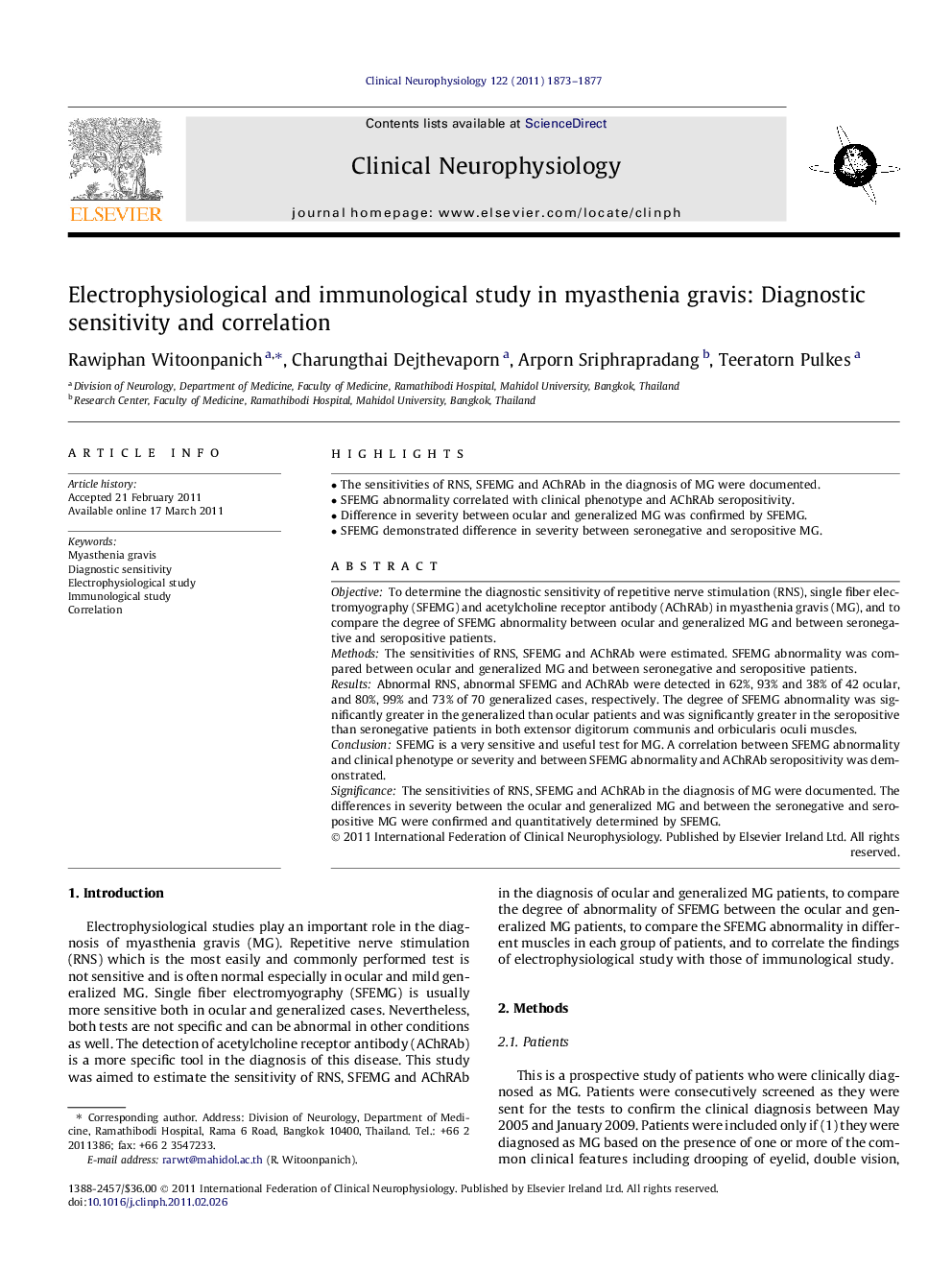| Article ID | Journal | Published Year | Pages | File Type |
|---|---|---|---|---|
| 3045799 | Clinical Neurophysiology | 2011 | 5 Pages |
ObjectiveTo determine the diagnostic sensitivity of repetitive nerve stimulation (RNS), single fiber electromyography (SFEMG) and acetylcholine receptor antibody (AChRAb) in myasthenia gravis (MG), and to compare the degree of SFEMG abnormality between ocular and generalized MG and between seronegative and seropositive patients.MethodsThe sensitivities of RNS, SFEMG and AChRAb were estimated. SFEMG abnormality was compared between ocular and generalized MG and between seronegative and seropositive patients.ResultsAbnormal RNS, abnormal SFEMG and AChRAb were detected in 62%, 93% and 38% of 42 ocular, and 80%, 99% and 73% of 70 generalized cases, respectively. The degree of SFEMG abnormality was significantly greater in the generalized than ocular patients and was significantly greater in the seropositive than seronegative patients in both extensor digitorum communis and orbicularis oculi muscles.ConclusionSFEMG is a very sensitive and useful test for MG. A correlation between SFEMG abnormality and clinical phenotype or severity and between SFEMG abnormality and AChRAb seropositivity was demonstrated.SignificanceThe sensitivities of RNS, SFEMG and AChRAb in the diagnosis of MG were documented. The differences in severity between the ocular and generalized MG and between the seronegative and seropositive MG were confirmed and quantitatively determined by SFEMG.
► The sensitivities of RNS, SFEMG and AChRAb in the diagnosis of MG were documented. ► SFEMG abnormality correlated with clinical phenotype and AChRAb seropositivity. ► Difference in severity between ocular and generalized MG was confirmed by SFEMG. ► SFEMG demonstrated difference in severity between seronegative and seropositive MG.
